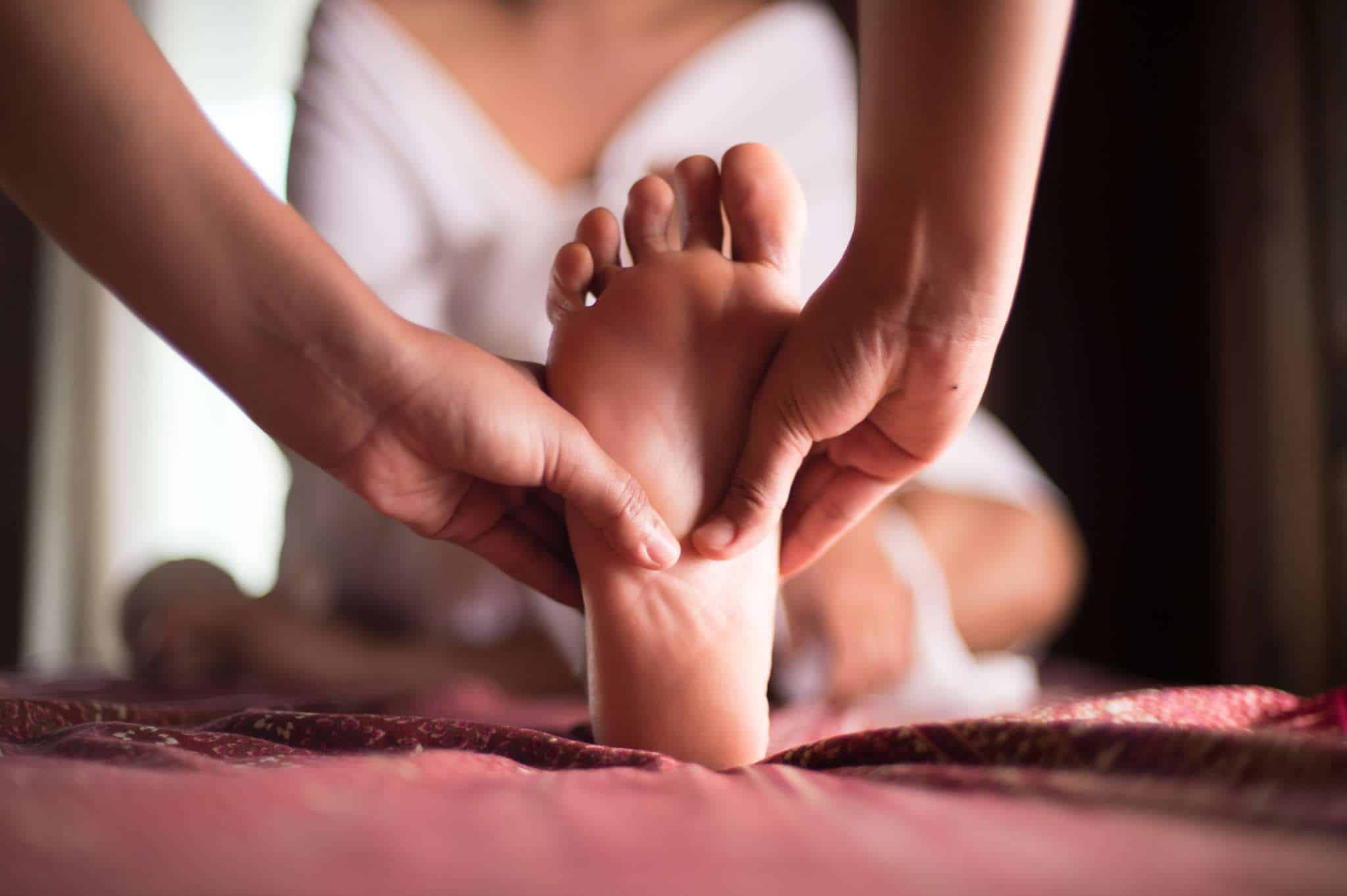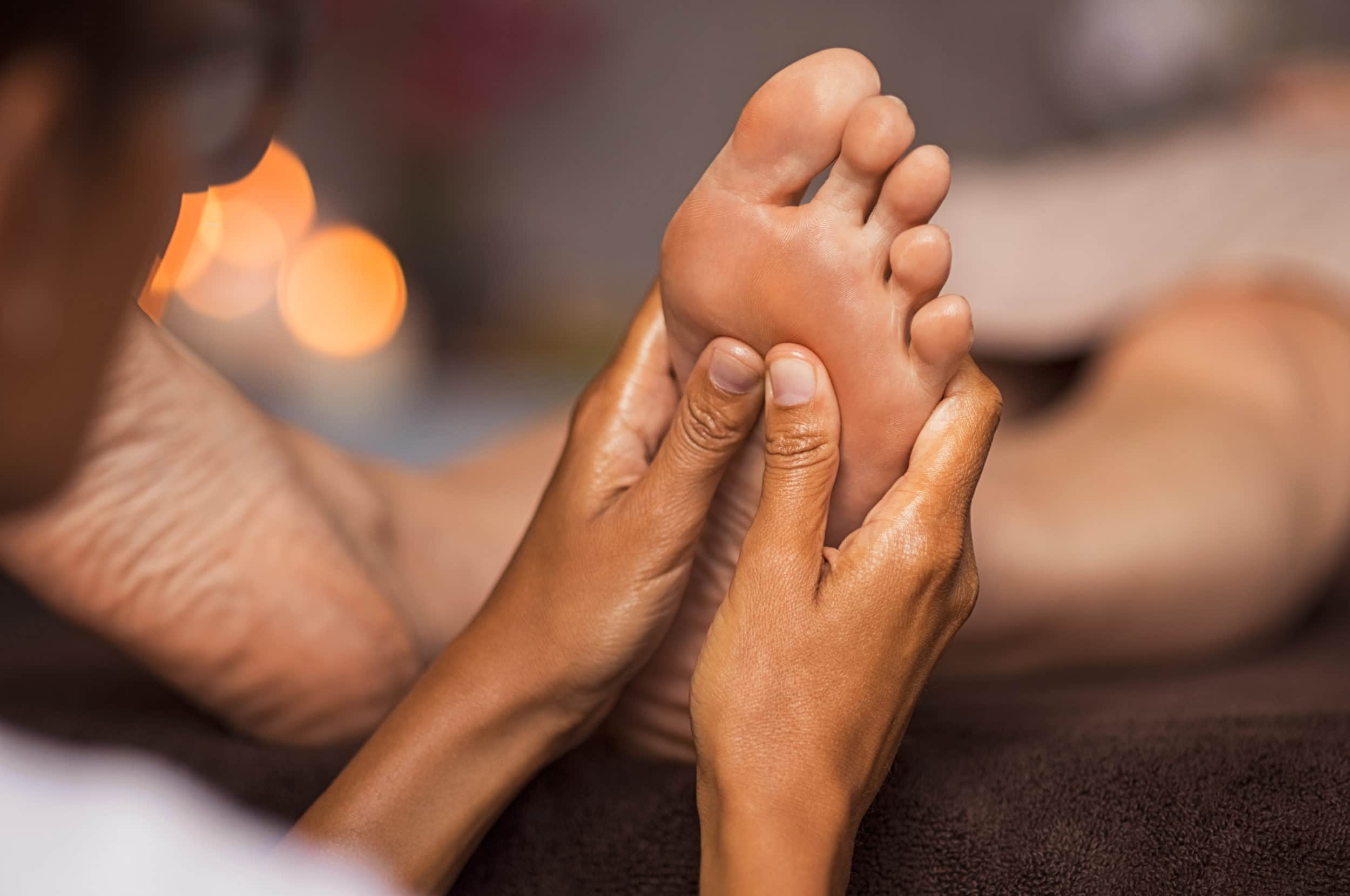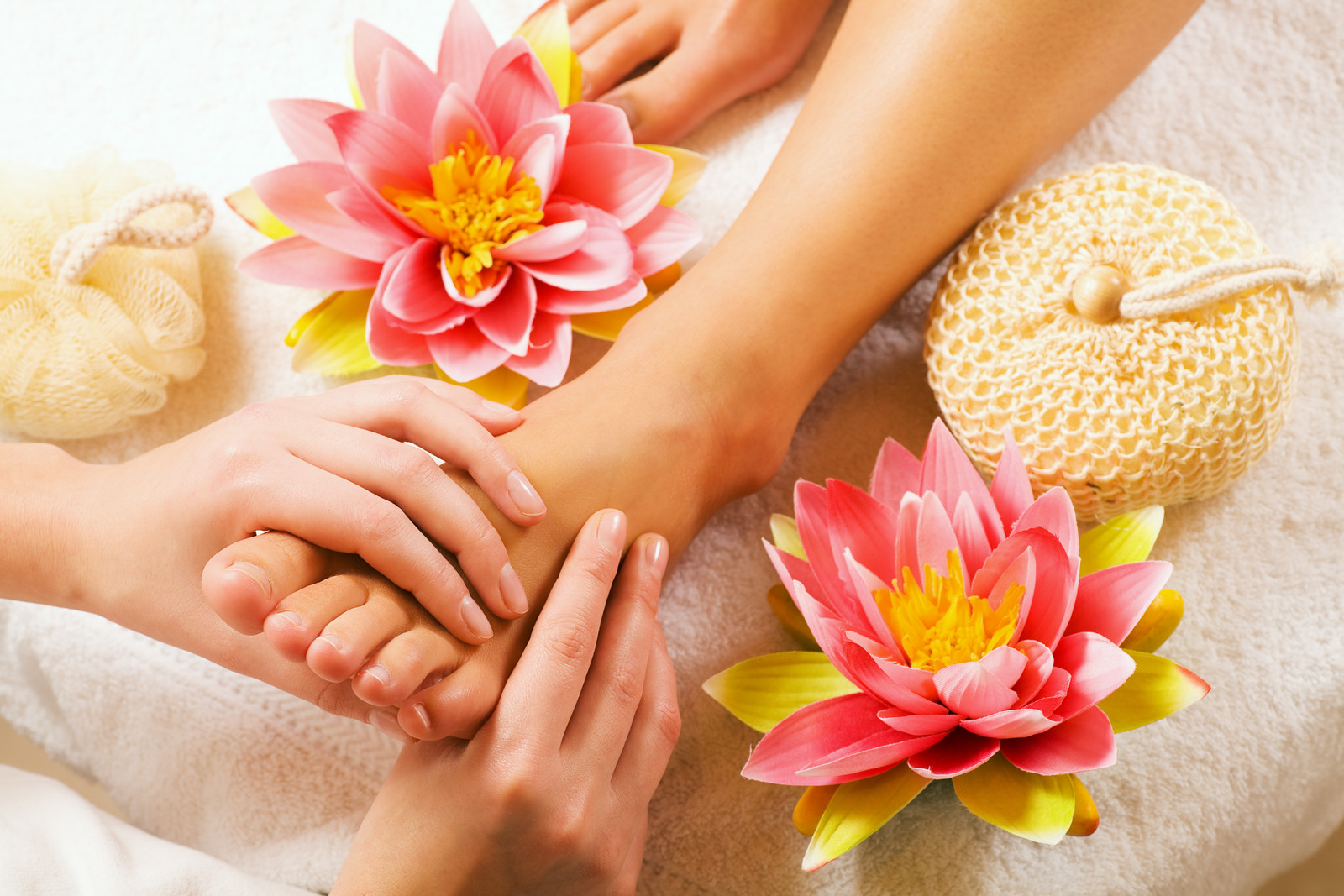 Reflexology: Penang/Kuala Lumpur Malaysia
Reflexology: Penang/Kuala Lumpur Malaysia

A fascinating fusion of the East and West, Penang embraces modernity while retaining its traditions and old world charm. These are reflected in its harmonious multiracial populace and well-preserved heritage buildings which led to George Town being accorded a listing as a UNESCO World Cultural Heritage Site recently. Long regarded as the food capital of Malaysia, Penang also entices visitors with its beautiful coasts and scrumptious cuisines.
Penang is a state in Malaysia and the name of its constituent island, located on the northwest coast of Peninsular Malaysia by the Strait of Malacca. It is bordered by Kedah in the north and east, and Perak in the south. Penang is the second smallest Malaysian state in area after Perlis, and the eighth most populous. It is composed of two parts – Penang Island, where the seat of government is, and Seberang Perai (formerly Province Wellesley in English) on the Malay Peninsula. Highly urbanised and industrialised Penang is one of the most developed and economically important states in the country, as well as a thriving tourist destination. Penang has the third-highest Human Development Index in Malaysia, after the federal territory of Kuala Lumpur and the state of Selangor. Its heterogeneous population is highly diverse in ethnicity, culture, language, and religion. A resident of Penang is colloquially known as a Penangite. Penang has been ranked by Yahoo! Travel as one of the “10 Islands to Explore Before You Die” and listed in Patricia Schultz’s best-selling 1,000 Places to See Before You Die travel book.
Kuala Lumpur (called simply KL by locals) is the federal capital and the largest city in Malaysia. Literally meaning “muddy river confluence” in Malay, Kuala Lumpur has grown from a small sleepy Chinese tin-mining village to a bustling metropolis of around 6.5 million (city-proper population of 1.8 million) in just 150 years. A cultural melting pot with some of the world’s cheapest 5-star hotels, cheap, great shopping, even better food and some of nature’s wonders in just an hour away, this dynamic city has much to offer for every visitor.
Reflexology, or zone therapy, is an alternative medicine involving the physical act of applying pressure to the feet, hands, or ears with specific thumb, finger, and hand techniques without the use of oil or lotion. It is based on what reflexologists claim to be a system of zones and reflex areas that they say reflect an image of the body on the feet and hands, with the premise that such work effects a physical change to the body. A 2009 systematic review of randomised controlled trials concludes that
“The best evidence available to date does not demonstrate convincingly that reflexology is an effective treatment for any medical condition.”
There is no consensus among reflexologists on how reflexology is supposed to work; a unifying theme is the idea that areas on the foot correspond to areas of the body, and that by manipulating these one can improve health through one’s qi. Reflexologists divide the body into ten equal vertical zones, five on the right and five on the left. Concerns have been raised by medical professionals that treating potentially serious illnesses with reflexology, which has no proven efficacy, could delay the seeking of appropriate medical treatment.
The Reflexology Association of Canada defines reflexology as:
“A natural healing art based on the principle that there are reflexes in the feet, hands and ears and their referral areas within zone related areas, which correspond to every part, gland and organ of the body. Through application of pressure on these reflexes without the use of tools, crèmes or lotions, the feet being the primary area of application, reflexology relieves tension, improves circulation and helps promote the natural function of the related areas of the body.”
Reflexologists posit that the blockage of an energy field, invisible life force, or Qi, can prevent healing. Another tenet of reflexology is the belief that practitioners can relieve stress and pain in other parts of the body through the manipulation of the feet. One claimed explanation is that the pressure received in the feet may send signals that ‘balance’ the nervous system or release chemicals such as endorphins that reduce stress and pain. These hypotheses are rejected by the general medical community, who cite a lack of scientific evidence and the well-tested germ theory of disease.

Reflexology’s claim to manipulate energy (Qi) has been highly controversial, as there is no scientific evidence for the existence of life energy (Qi), ‘energy balance’, ‘crystalline structures,’ or ‘pathways’ in the body.
In Trick or Treatment? Alternative Medicine on Trial, Simon Singh argues that if indeed the hands and feet “reflect” the internal organs, reflexology might be expected to explain how such “reflection” was derived from the process of Darwinian natural selection; but Singh observes that no argument or evidence has been adduced.
Reflexology is one of the most used alternative therapies in Denmark. A national survey from 2005 showed that 21.4% of the Danish population had used reflexology at some point in life and 6.1% had used reflexology within the previous year.
A study from Norway showed that 5.6% of the Norwegian population in 2007 had used reflexology within the last 12 months.
In the United Kingdom, reflexology is coordinated on a voluntary basis by the Complementary and Natural Healthcare Council (CNHC). Registrants are required to meet Standards of Proficiency outlined by Profession Specific Boards, as CNHC is voluntary anyone practising can describe themselves as reflexologists. When the CNHC began admitting reflexologists, a skeptic searched for and found 14 of them claiming efficacy on illnesses. Once pointed out, the CNHC had the claims retracted as it conflicted with their Advertising Standards Authority.
Practices resembling reflexology may have existed in previous historical periods. Although its origins are not well documented, there are reliefs on the walls of a Sixth Dynasty Egyptian tomb (c. 2450 B.C.) that depict two seated men receiving massage on their hands and feet.
In the book Medicina Libri octo, Aulus Cornelius Celsus, influenced by Hippocrates writes, “Much more often, however, some other part is to be rubbed than that which is the seat of the pain; and especially when we want to withdraw material from the head or trunk, and therefore rub the arms and legs.” This reference leads to the conclusion that reflexology is Greek in origin.
Reflexology was introduced to the United States in 1913 by William H. Fitzgerald, M.D. (1872–1942), an ear, nose, and throat specialist, and Dr. Edwin Bowers. Fitzgerald claimed that applying pressure had an anesthetic effect on other areas of the body.
Reflexology was modified in the 1930s and 1940s by Eunice D. Ingham (1889–1974), a nurse and physiotherapist. Ingham claimed that the feet and hands were especially sensitive, and mapped the entire body into “reflexes” on the feet renaming “zone therapy” to reflexology. Ingham’s theories are prominent in the United States and United Kingdom, although modern methods also exist.
Reflexology has had several clinical trials dedicated to it over the years with mixed results. One systematic review found, “The best evidence available to date does not demonstrate convincingly that reflexology is an effective treatment for any medical condition.”
Reflexology is a form of bodywork that focuses primarily on the feet. How does it work?
The underlying theory behind reflexology is that there are “reflex” areas on the feet and hands that correspond to specific organs, glands, and other parts of the body.
the tips of the toes reflect the head
the heart and chest are around the ball of the foot
the liver, pancreas and kidney are in the arch of the foot
low back and intestines are towards the heel
He believed that certain areas on the feet and hands were linked to other areas and organs of the body. This concept was furthered by physiotherapist Eunice Ingham into the modern practice of reflexology.
Practitioners believe that applying pressure to these reflex areas can promote health in the corresponding organs through energetic pathways.
Dr. William H. Fitzgerald, an ear, nose, and throat doctor, introduced this concept of “zone therapy” in 1915. American physiotherapist Eunice Ingram further developed this zone theory in the 1930’s into what is now knows as reflexology.
A scientific explanation is that the pressure may send signals that balance the nervous system or release chemicals such as endorphins that reduce pain and stress.

What will I feel?
Most people find reflexology for the most part to be very relaxing.
Reflexology shouldn’t be painful. If you feel discomfort, be sure to tell the reflexologist. He or she should work within your comfort zone.
Some areas may be tender or sore, and the reflexologist may spend extra time on these points. The soreness should decrease with pressure.
If you’re ticklish, not to worry. The reflexologist applies firm pressure to the feet.
People get reflexology in:
- Stress and stress-related conditions
- Tension headaches
- Digestive disorders
- Arthritis
- Insomnia
- Hormonal imbalances
- Sports injuries
- Menstrual disorders, such as premenstrual syndrome (PMS)
- Digestive problems, such as constipation
- Back pain
- Reflexology is a popular alternative therapy. It promotes relaxation, improves circulation, reduces pain, soothes tired feet, and encourages overall healing.
Reflexology is also used for post-operative or palliative care. A study in the American Cancer Society journal found that one-third of cancer patients used reflexology as a complementary therapy. Reflexology is recommended as a complementary therapy and should not replace medical treatment.
Typical reflexology treatment :
- A typical treatment is 45 minutes to 60 minutes long and begins with a consultation about your health and lifestyle.
- You are then asked to remove your shoes and socks and sit comfortably in a reclining chair or on a massage table. Otherwise you remain fully clothed.
- The reflexologist will assess the feet and then stimulates various points to identify areas of tenderness or tension.
- The reflexologist then uses brisk movements to warm the feet up. Then pressure is applied from the toes to the heel according to your comfort.
- Lotion or oil may be used.
- Feeling after reflexology:
- Most people feel calm and relaxed after a treatment. They may even feel sleepy. Occasionally, people feel nauseous, anxious, or tearful, but this is only temporary and is considered to be part of the healing process.
Precautions
- If you’re pregnant, talk with your doctor first and let the reflexologist know.
- Be sure to give the reflexologist a complete and accurate health history.
- If you have foot ulcers, injury, or blood vessel disease such as blood clots, consult your doctor before having reflexology.
Suggested centers to visit: http://www.reborn.com.my/, they have centers both at Penang & Kuala Lumpur Malaysia.
Suggested website: http://www.tourismpenang.net.my/
Recommended massage centre in Kuala Lumpur Malaysia
Shujin Therapy Zone Professional Reflexology Clinic
No. 15M Jalan Tun Sambanthan 4, Brickfields 50470, Kuala Lumpur Malaysia
Telephone no is 03-2274 4925
Disclaimer
The Content is not intended to be a substitute for professional medical advice, diagnosis, or treatment. Always seek the advice of your physician or other qualified health provider with any questions you may have regarding a medical condition.